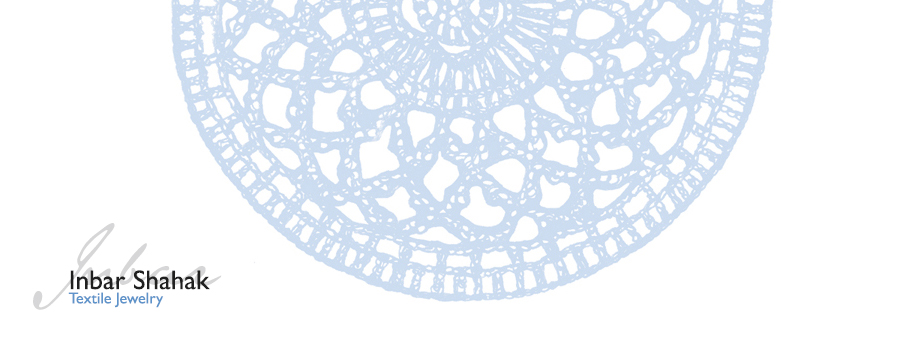As a textile designer
by profession, I am always looking for ways to apply textile patterns and techniques
on metal.
For example when I was working in
collaboration with fashion designer Adva bruner for duende for the TLV fashion
week runway show, we looked for a way to make tie -dye textile colors over
metal jewelry parts. That's how I discover the patina, an antique Greek
handmade coloring technique that actually resembles the tie- dye technique in
textile design, Adva was looking for ways to create waves in knitting and I was
searching for the look and feel of treasures drawn from the ocean.
This lead to
the patina collection, in Sparkling blue and natural green colors like
treasures lurking at the dark.
The
role of color in sculpture and decorative arts was significant from the very
beginning.
In
ancient times, metals that were most resistant to the changes resulting from
heat and the surrounding atmosphere, were actually considered nobler, and were
used for the more important artifacts,
however, the
inheritors of those traditions had a revived interest in the artifacts of
earlier periods that had the natural patination, produced mostly from long
burial. These objects were collected and studied.
The
growing interest in classicism such as in renaissance Italy and the Chin dynasty
in china, resulted in the desire to imitate the natural patination that was
associated with a prized artifact, this led to artificial patination being a
finishing process in its own right used on contemporary work.
Most
of the basic processes of metal work involve the use of heat, which results in
changing the metal surface into oxides. With just the touch of heat, air,
oxygen or any other chemical materials, even from our own kitchen supplies can be
used into making a beautiful color to wear.
For instance, putting metal next to
vinegar fumes in a closed box for 24 hours will result in a green patina layer,or bury them in a plastic bag next to a rotten egg.
Color
might be considered less important in the making of sculpture or craft, as it
is a separate process applied to the object after its making, but in many cases
it's actually a key factor in the visual coherence of the object, and there for
it is of great importance.
It
is also interesting to think of color not as an added layer, but as a surface and a material
on its own, with growing life and emerging colors that keep evolving and
changing and growing on the surface.
Me wearing my Woodland leaf necklace
you can find it here:

